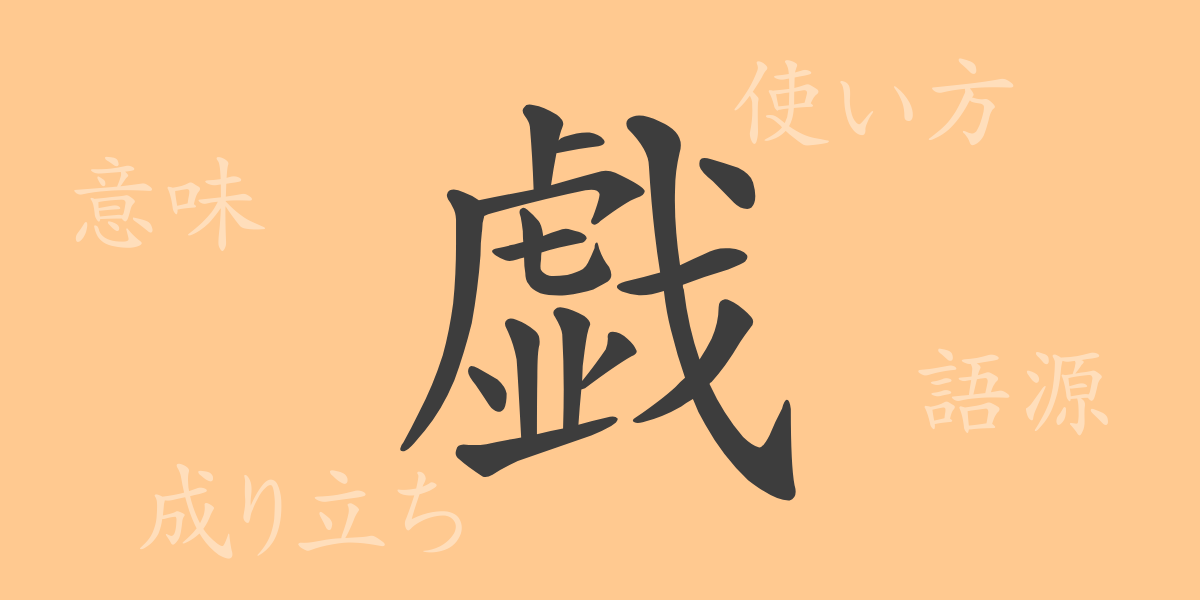Words are the threads that weave culture and history, and common-use kanji in Japanese are an essential part of this fabric. This time, we step into the world of the Japanese common-use kanji “戯” (gi) and delve deeply into its origins, meanings, usage, and idioms. Let’s explore the rich expressiveness of this single character and the depth of the Japanese language together.
Origin of the Kanji “戯” (語源)
The kanji “戯” (gi) has its origins in ancient China. This character is derived from pictographs that originally depicted people playing. Ancient forms of the character depicted a person dancing with arms outstretched, and over time, it evolved into its current form. This kanji has been used throughout history to symbolize human playfulness and lightheartedness.
Meaning and Usage of “戯” (gi)
The kanji “戯” (gi) means “to play,” “to frolic,” or “to joke.” It can also refer to frivolous actions or words and is used in various contexts. Words and expressions containing this character can add a playful nuance or convey criticism, depending on the context and the speaker’s intent.
Reading, Stroke Count, and Radical of “戯” (gi)
In Japanese, the kanji “戯” (gi) has several readings.
- Reading: The on-yomi (Chinese reading) is “ギ” (gi), and the kun-yomi (Japanese readings) include “たわむれる” (tawamureru), “ざれる” (zareru), and “じゃれる” (jareru).
- Stroke count: The total stroke count of “戯” (gi) is 15 strokes.
- Radical: The radical of “戯” (gi) is “戈” (ほこづくり, hokozukuri), meaning spear.
Idioms, Proverbs, and Expressions Using “戯” (gi)
There are many idioms, proverbs, and expressions in Japanese that include “戯” (gi). Here are a few examples:
- 戯言 (ぎげん, gigen): Jokes or nonsense that should not be taken seriously.
- 戯作 (ぎさく, gisaku): A light and amusing piece of work.
- 戯れ言 (たわごと, tawagoto): Words not meant seriously; jokes.
- 戯れる (たわむれる, tawamureru): To play or to frolic; to joke with someone intimately.
- 戯画 (ぎが, giga): A picture drawn with satire or humor.
These expressions are used in a wide range of contexts, from daily conversations to literary works and art, showcasing the richness of Japanese expression.
Summary on “戯” (gi)
The kanji “戯” (gi) has enriched Japanese expression through its history and diverse usage. Symbolizing playfulness, this single character takes on various forms in language, playing an indispensable role in our communication. By understanding the meanings and backgrounds of individual kanji characters through this exploration, we can appreciate the depth of the Japanese language even more.

























